Apple Basundi – rich, creamy, and decadent Indian dessert! Here is my basundi – thickened sweet milk with the goodness of apple, flavored with cardamom!
Call it apple basundi or rabri; I can guarantee that you will fall in love with this dessert for sure.
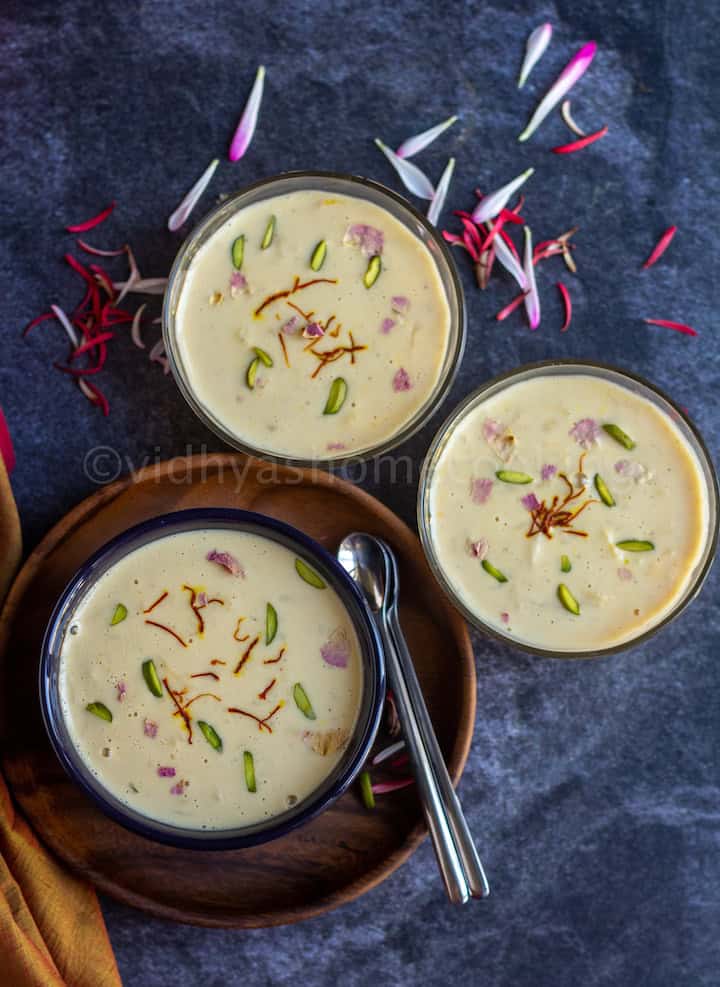
I have been sharing some easy and straightforward Diwali recipes for the past few days. And today’s recipe is also an easy one, but I did not take any shortcuts, and I made everything from scratch on a stove-top. It is time-consuming but worth the time.
So what am I sharing today? It’s the apple basundi. Basundi is my favorite dessert, and it’s quite popular in Tamil Nadu restaurants. Our visit to Adyar Ananda Bhavan (a South Indian restaurant chain) is incomplete without a bowl of basundi.
Jump to:
What is basundi?
Basundi is a creamy dessert made by reducing the milk to half its quantity by boiling it at low heat. We then sweeten it by adding sugar, and you can enhance the flavors by adding cardamom powder or saffron, or other flavorings of your choice.
I never bothered to find the origin of this dish until I decided to blog about it. According to the wiki, it is quite popular in Maharashtra, Gujarat, Andhra, Telangana, Karnataka, and Tamil Nadu. I couldn’t find the exact origin.
The interesting part; there is a similar recipe called rabri or rabdi, which is quite popular in North India. Rabri uses the same ingredients, so what’s the difference between basundi and rabri?
Basundi and Rabri
I am sharing my understanding of basundi and rabri. Please correct me if I am wrong. Basundi and rabri use the same ingredients, but both have a subtle difference in the texture and the preparation. Yes, subtle difference, and I saw many recipes online which uses rabri and basundi interchangeably.
Basundi
For basundi, we reduce the milk to half its quantity by simmering it over low heat. We don’t collect the cream/frothy layer (the thin top layer) that forms while the milk is simmering. We stir the milk and keep adding the cream back into the milk. Basundi is not as thick as rabdi, and you won’t find the malai or cream chunks. As we stir the collected cream and mix, it blends with the milk.
Rabri or Rabdi
For rabdi or rabri, we reduce the milk to ½ or ⅓ of its quantity by simmering it over low heat. For rabri, we collect the frothy cream layer that forms while milk is simmering. We push it to the sides of the vessel in which we are simmering. After we reduce the milk into ½ or ⅓, we add the collected cream back into the milk. So the texture of the rabdi is different, and it is thick also.
Apple Basundi or Apple Rabdi
I made it more like basundi. While simmering the milk, I did not collect the cream, and I reduced it to half the quantity. But with grated apples, the texture was more like rabdi, and as we let it cool, it thickens. So I was confused if I should call this as rabdi or basundi. Eventually went with basundi.
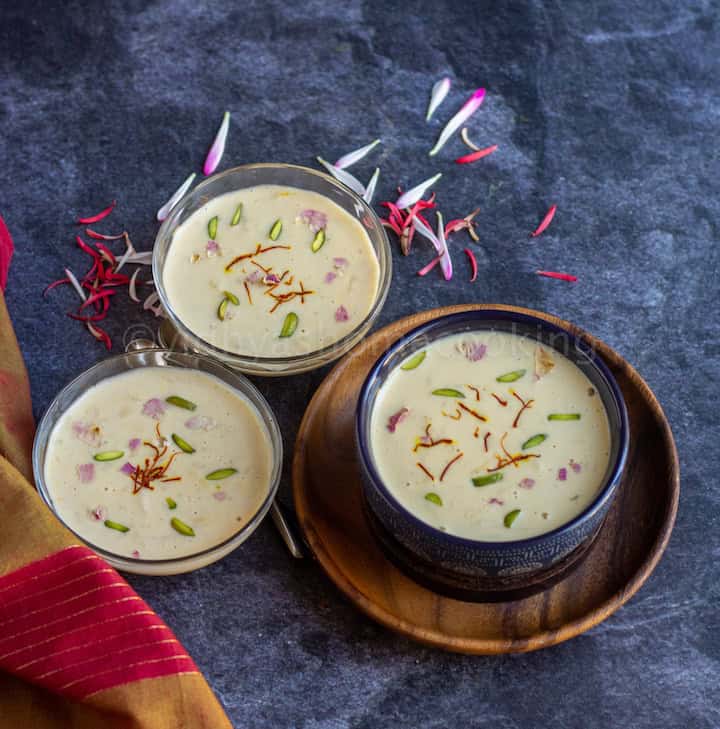
Call it however you want, but you will love this dish, and you can serve this in many ways. You can use it for your bread pudding, malpua, or even with jalebi.
VVK Tip for preventing milk overflowing while boiling
Making basundi is time-consuming but very straight forward. I used a combination of evaporated milk and reduced-fat milk for this recipe. We need to simmer until the milk is reduced to half. It usually takes about 35 to 40 minutes. The timing depends upon the vessel you use and also the heat. I usually keep it low and continue with my other work. There is a good chance for the milk to boil and overflow. But I have a tip for that.
- Place a wooden spatula on top of the vessel like below.
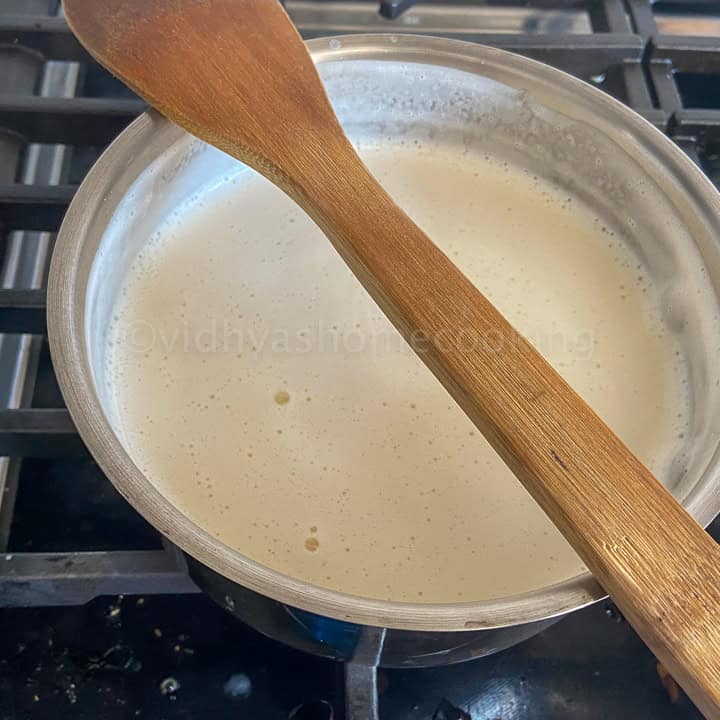
- And as you can see below, the milk doesn’t spill. The wooden spatula on top prevents it.
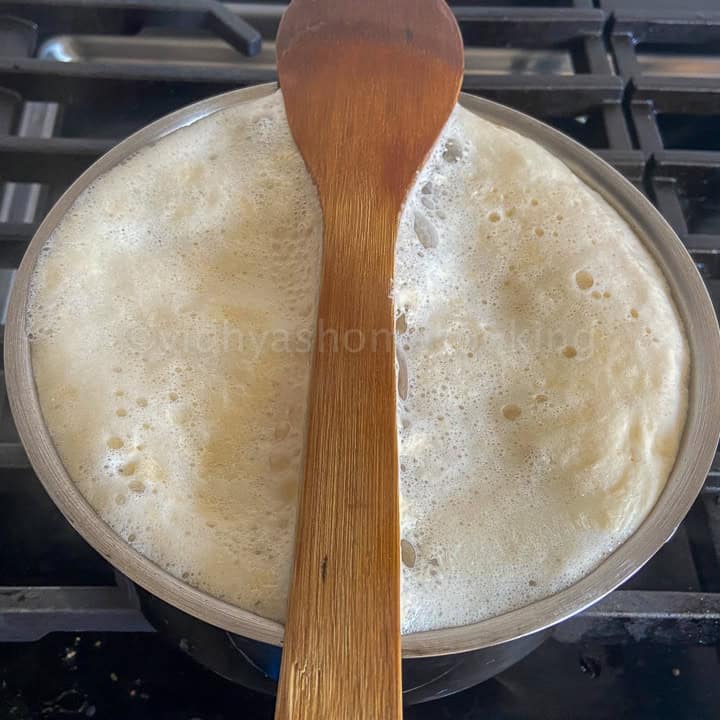
I follow the same technique when I cook rice in the open-pot method. I have shared that video on my YouTube as well. Please check it out.
Basundi Serving Suggestions
You can serve basundi warm or cold. These days basundi and rabdi shots are quite popular. You can serve them in shot glasses garnished with nuts as shot glass desserts.
If you are building a dessert jar, you can add this as a liquid layer. I made dessert jars using my chhena poda, this basundi, and one more dessert. I will share the details in the coming posts.
So far, I have stored basundi in the refrigerator for two days. But I am sure it’s ok to store a little longer.
How to make apple basundi?
- In a heavy bottom pan, add both the evaporated milk and reduced-fat milk.
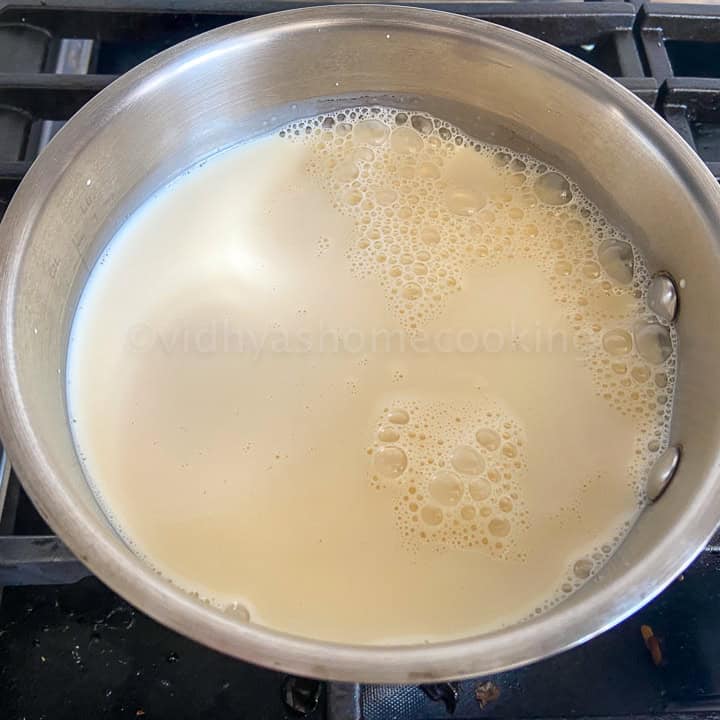
- I used a 12 oz can of evaporated milk and used the same amount of reduced-fat milk. Bring it to a boil over medium-low heat.
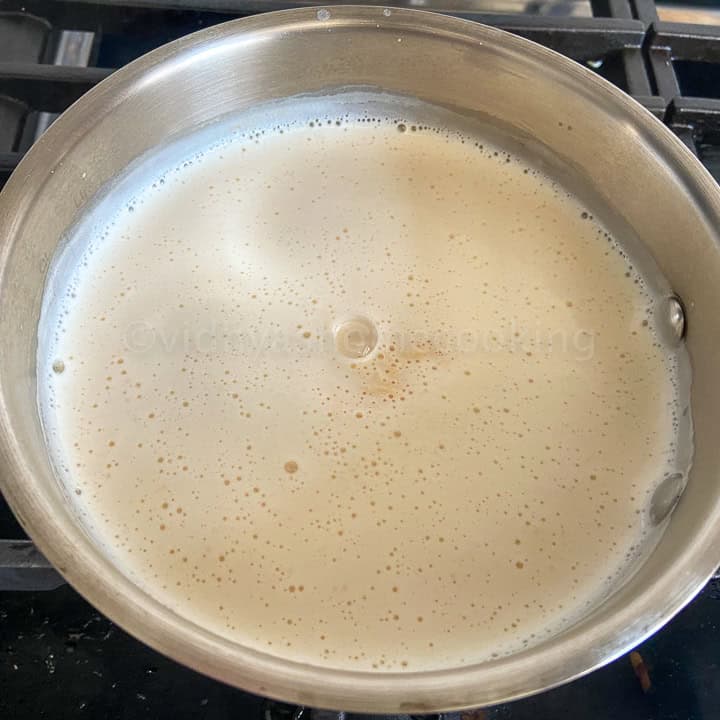
- When it boils, reduce the heat and add the sugar. Mix well and reduce the heat to low, and simmer till the milk reduces to half. Keep stirring between and during the process, collect the frothy cream, scrape the sides, and add it back to the basundi mixture. It took me 40 minutes for the milk to thicken.
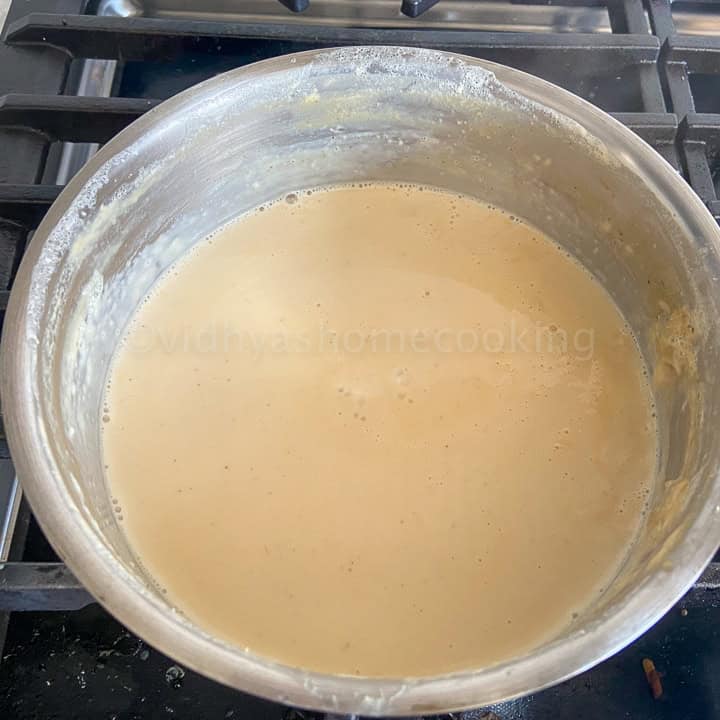
- Now add the cardamom powder and mix well. Parallelly, peel, and grate the apple. I got about ¾ cup of apple. Add the grated apple to the milk mixtures. Mix it and cook for 3 to 4 minutes. Then turn off the heat.
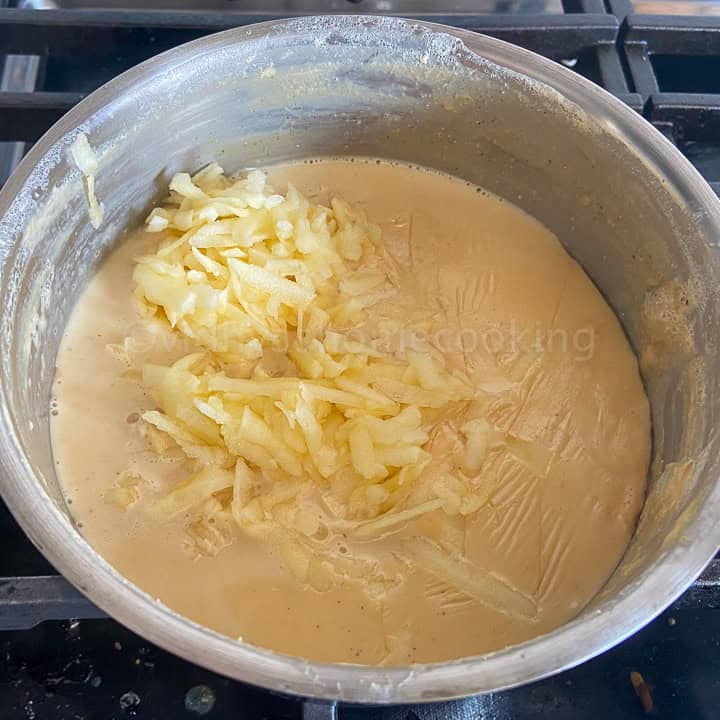
- Add the saffron strands (optional) and allow it to cool. Then garnish it more with saffron strands, nuts, and dried rose petals and serve warm or cold.
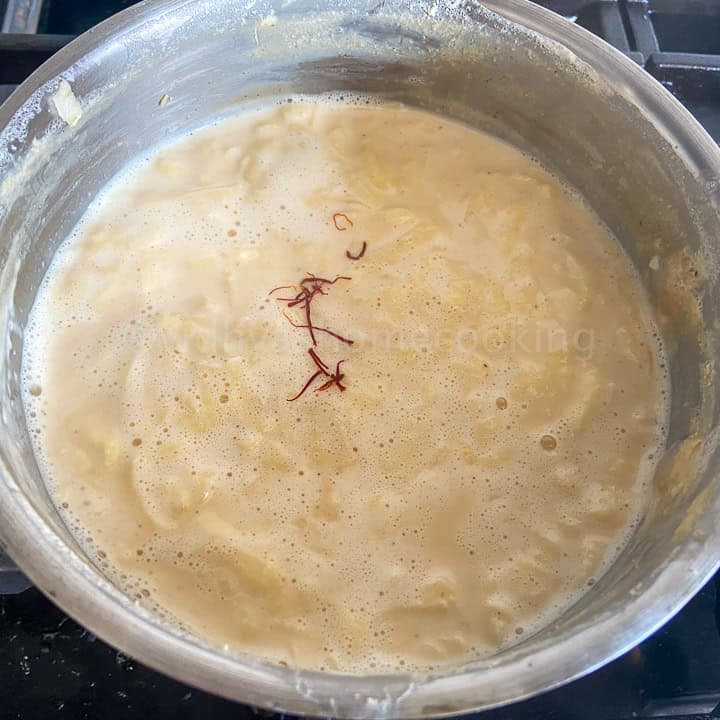
VVK Tips for the best basundi
- Use a heavy bottom pan for making basundi or rabdi.
- Adding sugar – I added the sugar after the first boil, i.e., after 10 minutes. But you can add the sugar after you have reduced the milk.
- You can very well make this basundi without the apple. In that case, add more sugar.
- Make sure you use sweet apple variety and grate it just before adding it to the milk. If the peel and grate it before, due to oxidization, it might turn black.
- After adding apple, cook it for 3 to 4 minutes at low heat. As we are reducing the milk with sugar, curdling should not happen. But keep stirring it to avoid any mishaps.
- You can add flavorings of your choice and serve it warm or chilled.
- I used a combination of evaporated milk and reduced-fat milk. You can skip evaporated milk either use whole milk or just reduced-fat milk.
- You can find the homemade cardamom powder video on my YouTube channel.
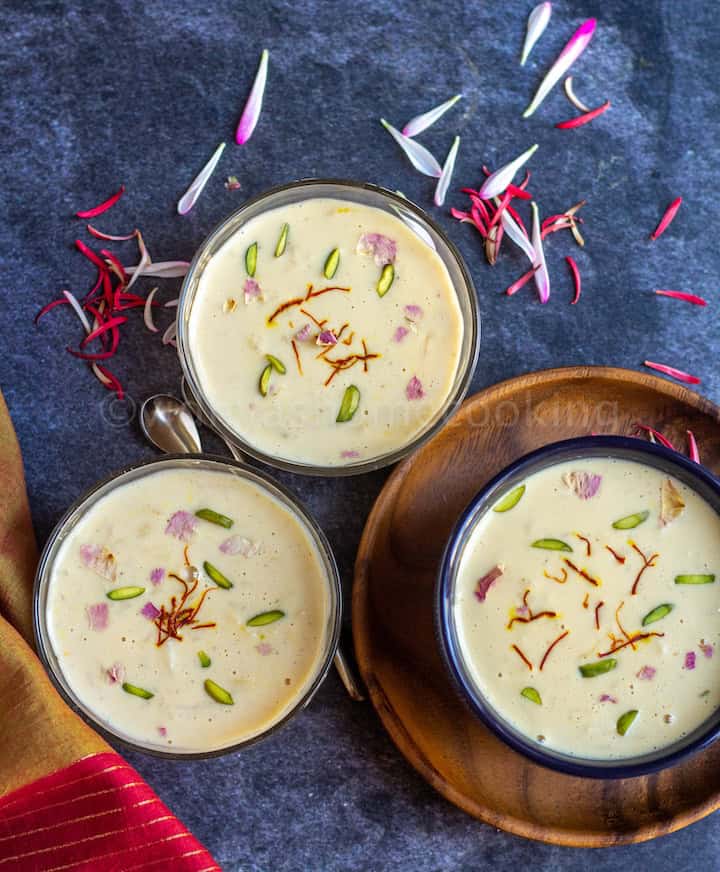
More kheer recipes from my archives
PS: If you try this apple basundi, please don’t forget to comment and rate this recipe. If you have any questions, please leave a comment, and I will get to it A.S.A.P. Make sure to follow me on my Pinterest for more healthy and delicious ideas! Follow me on Instagram or join my Facebook Group for more gardening and recipe updates! You can also sign-up for my newsletter for weekly updates.
📖 Recipe
Apple Basundi Without Condensed Milk
Equipment
- Sauce pan or kadai
- Grater
Ingredients
Measurment Details: 1 cup=240ml; 1 tbsp=15ml; 1tsp=5ml;
- 12 oz evaporated milk
- 12 oz reduced-fat milk I used 2% reduced-fat milk
- 2.5 tbsp sugar or to taste
- 1 medium-sized apple ¾ cup grated (Any sweet variety should work)
- ¼ tsp ground cardamom
- nuts and saffron strands, and dried rose petals to garnish
Instructions
- In a heavy bottom pan, add both the evaporated milk and reduced-fat milk. I used a 12 oz can of evaporated milk and used the same amount of reduced-fat milk.
- Bring it to a boil over medium-low heat.
- When it boils, reduce the heat and add the sugar. Mix well and reduce the heat to low, and simmer till the milk reduces to half. Keep stirring between and during the process, collect the frothy cream, scrape the sides, and add it back to the basundi mixture. It took me 40 minutes for the milk to thicken.
- Now add the cardamom powder and mix well. Parallely, peel and grate the apple. I got about ¾ cup of apple. Add the grated apple to the milk mixtures. Mix it and cook for 3 to 4 minutes. Then turn off the heat.
- Let it cool and garnish it with saffron strands, nuts, and dried rose petals and serve warm or cold.
Notes
- Use a heavy bottom pan for making basundi or rabdi.
- Adding sugar – I added the sugar after the first boil, i.e., after 10 minutes. But you can add the sugar after you have reduced the milk.
- You can very well make this basundi without the apple. In that case, add more sugar.
- Make sure you use sweet apple variety and grate it just before adding it to the milk. If the peel and grate it before, due to oxidization, it might turn black.
- After adding apple, cook it for 3 to 4 minutes at low heat. As we are reducing the milk with sugar, curdling should not happen. But keep stirring it to avoid any mishaps.
- You can add flavorings of your choice and serve it warm or chilled.
- I used a combination of evaporated milk and reduced-fat milk. You can skip evaporated milk either use whole milk or just reduced-fat milk.
Nutrition
I am not a nutritionist. The nutritional information is provided as a courtesy and is an estimate only. It varies depending upon the product types or brands.


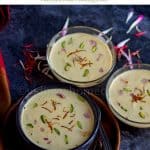
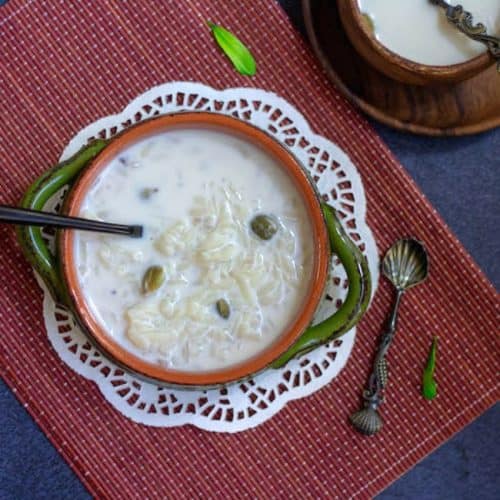
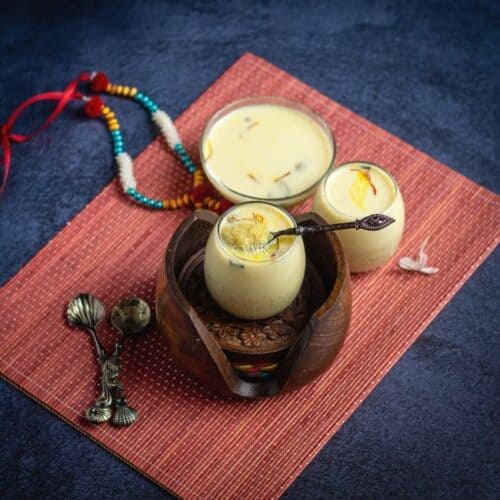
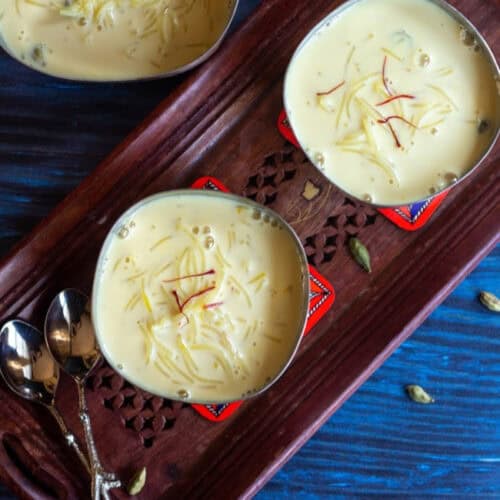
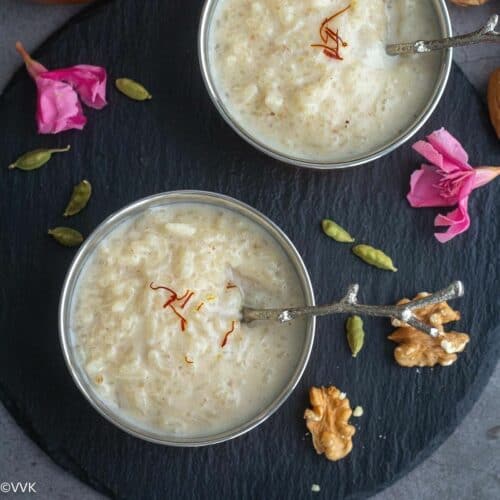
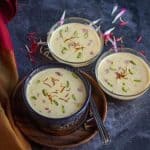
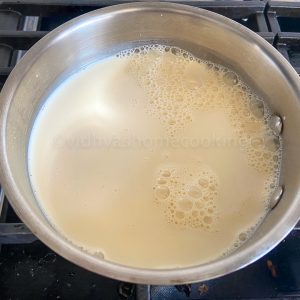
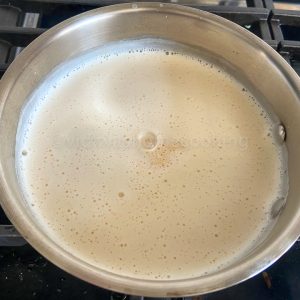
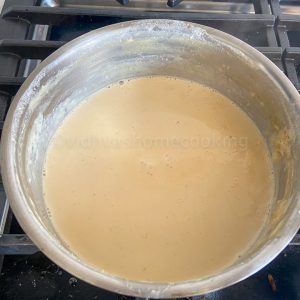
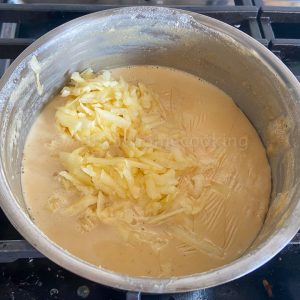
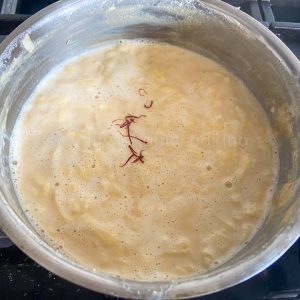

I once tried Apple Rabadi recipe without using evaporated/condensed milk. As soon as I added the apple to the reduced milk mixture (I did this while the vessel was still on the stove0, the milk turned into paneer :(
Any idea how to avoid that?
Was the apple tart? if the apples are tart it might curdle the milk. Also, make sure you have reduced the milk mixture to half or 1/3 of the original amount. The other tip is to add the sugar first before adding the apple. I add sugar right after the boil and reduce the milk mixture. I hope these points should help.
You can also try cooking the apples separately and then add it to the not-so-hot basundi/rabdi.